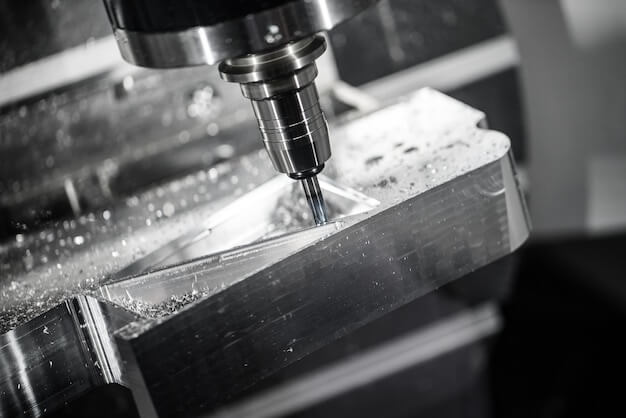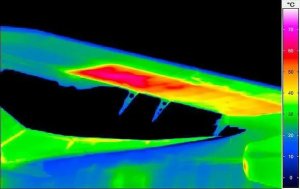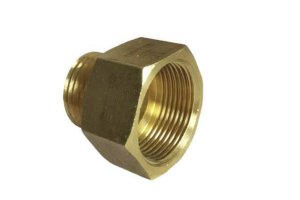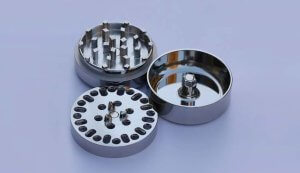Introduction to CNC Machining and Its Role in Precision Manufacturing
CNC (Computer Numerical Control) machining is a pivotal technology in the field of precision manufacturing. This automated process controls machine tools by using programmed commands, freeing human operators from direct manual control. The core significance of CNC machining lies in its capacity for extreme precision and consistency, aspects that are crucial in advanced manufacturing scenarios. To illustrate, sectors demanding high levels of accuracy such as aerospace, automotive, or medical device industries heavily rely on CNC machines to fabricate complex parts with exacting specifications. Thus, mastering techniques to maximize precision in CNC machining equates to enhanced product quality and operational efficiency in precision-intensive fields.
Understanding the Factors Affecting Precision in CNC Machining
The precision of Computer Numerical Control (CNC) machining is influenced by a multitude of factors, including machine tools, cutting tools, programming techniques, material properties, and environmental conditions. First, machine tools encompass structures like turners or mills – their calibration, maintenance, and overall quality play pivotal roles in determining precision. Similarly, the type, sharpness, and suitability of cutting tools for a specific job can affect accuracy. An incorrect tool-path, created via sub-optimal programming techniques, can also diminish precision. In terms of materials being machined, variations in hardness, ductility, toughness etc., pose different challenges for achieving high precision. Lastly, even optimal environment helps maintain precision – temperature fluctuations, vibrations, dust particles can have detrimental effects on precision. Thus, understanding these interplaying factors equips one to enhance precision.
Techniques for Improving Precision in CNC Machining Using Advanced Programming
Advanced programming techniques are pivotal in enhancing the precision of CNC machining operations. These techniques not only streamline the manufacturing process but also significantly improve the accuracy of the final products. By leveraging sophisticated software and programming strategies, manufacturers can achieve unparalleled precision in CNC machining.
Optimizing CAD and CAM Integration
Integrating Computer-Aided Design (CAD) and Computer-Aided Manufacturing (CAM) software seamlessly is crucial for precision machining. This integration allows for the efficient translation of complex designs into precise machining instructions, ensuring that the final product matches the original design specifications accurately.
Utilizing G-Codes and M-Codes
- G-Codes: These are the commands that guide the movement of the machine, dictating how to cut, move, and finish a piece. Optimizing these codes can significantly reduce errors and enhance the precision of cuts.
- M-Codes: These codes control the miscellaneous functions of the machine, such as turning the machine on and off. Fine-tuning these codes ensures the smooth operation of the CNC machine, contributing to the overall precision of the machining process.
Advanced Tool Path Optimization
Advanced programming can optimize the tool path, ensuring that the cutting tool moves in the most efficient route possible. This minimizes the machining time and reduces the risk of errors, leading to a more precise final product.
Implementing Error Minimization Strategies
Programming techniques can also include error minimization strategies, such as predictive maintenance and real-time monitoring. These strategies help in identifying potential issues before they affect the machining process, thereby maintaining the high precision of the CNC machining operation.
| Technique | Description | Impact on Precision |
|---|---|---|
| CAD/CAM Integration | Efficient translation of designs into machining instructions | Ensures products match design specifications |
| G-Codes Optimization | Precise control over cutting and movement | Reduces errors in cuts |
| M-Codes Fine-tuning | Controls miscellaneous machine functions | Enhances machine operation smoothness |
| Tool Path Optimization | Efficient routing of cutting tool | Minimizes machining time and errors |
| Error Minimization Strategies | Predictive maintenance and real-time monitoring | Identifies and mitigates potential issues |
By employing these advanced programming techniques, CNC machining operations can significantly improve the precision of their products, ensuring that they meet the stringent requirements of various industries.
Optimal Selection and Application of Cutting Tools in CNC Machining
In the realm of CNC machining, selecting and utilizing cutting tools optimally is vital to ensure precision. Various types of cutting tools such as end mills, drill bits, threading taps, broaches or inserts serve distinct purposes based on their design specifics. The tool geometry, involving factors like helix angle, rake angle and relief angle, notably influences the functionality of these tools by determining attributes like cutting force, ease of chip removal, heat generation and overall durability. Further, enhancements in terms of coatings – titanium nitride (TiN) or aluminum chromium nitride (AlCrN), for instance, can drastically improve a tool’s hardness, thermal stability and resistance against wear, thereby extending its lifespan. Moreover, fine-tuning speeds and feed rates not only contributes towards achieving desired dimensions, surface finish quality and minimizing production time but also helps prevent premature tool wear or breakage. For example, slow conditions may lead to ‘rubbing’ which harms tools while excessively fast settings risk chipping. Hence, attaining optimal selection and application of cutting tools necessitates careful attention to all these aspects.
Utilizing Advanced Programming Techniques in CNC Machining
In maximizing precision in CNC machining, a notable technique is the use of advanced programming methods. An instrumental tool for this is Computer-Aided Design/Computer-Aided Manufacturing (CAD/CAM) software. Primarily, CAD/CAM software enhances accuracy by creating detail-oriented and customizable digital blueprints that machines interpret to produce precisely manufactured parts. Furthermore, it encourages efficiency with strategies such as high-speed machining, enabling quick production without compromise on quality. Also noteworthy is the implementation of adaptive control algorithms. These are essentially systems that adjust the CNC machine’s functions based on real-time data during production, thereby increasing precision through regular optimization of operations. For instance, if a project involves carving intricate features into a metal part, an adaptive algorithm can continuously adjust the cutting speed or force to ensure optimal precision, preventing errors before they occur.
Implementing Effective Workholding Solutions
In CNC machining, precision can be significantly enhanced through the implementation of effective workholding solutions. Proper clamping and fixturing are vital in reducing workpiece movement during machining processes, promoting high-level accuracy and consistency. For instance, vises, a common example of holding devices, produce an exceptional grippage guaranteeing stability and diminished vibration throughout operations. Another specialized holding device is fixtures, custom-tailored for particular workpieces to anchor them firmly, hence preventing unnecessary shifts or rotations. As such, robustly executed workholding solutions ensure that parts are kept immobile, effectively maximizing precision.
Tips for Maximizing Precision in CNC Machining: Material Selection and Preparation
In the pursuit of optimal precision within CNC machining, a significant factor lies in the thoughtful selection and thorough preparation of materials. It is essential to choose consistent, reliable stock that can withstand the machining process without compromising on accuracy. This includes considering material hardness, machinability, heat-resistance, and overall durability. Once chosen, preparing this stock involves diligent cleaning and surface preparation. For instance, removal of any foreign particles via ultrasonic cleaning or abrasive blasting ensures a smoother run during the actual machining process. The aim here is to minimize potential interruptions that could potentially affect precision.
Enhancing Lubrication and Cooling Systems in CNC Machining
In the field of CNC machining, efficient lubrication plays a crucial role in reducing friction within the machinery mechanisms. The lower the friction, the less heat is produced, thus minimizing wear and potential damage to delicate components over time. For example, high-performance synthetic oils can serve as effective lubricants, protecting against both rust and corrosion while ensuring smooth operation of moving parts. Further strengthening precision is the incorporation of advanced cooling systems. These control temperature levels in the machine workspace, eliminating deviations caused by thermal expansion that could otherwise compromise component accuracy. By achieving a delicate balance between proficient lubrication and robust cooling, it is possible to significantly enhance the precision and lifespan of CNC equipment.
Quality Inspection and Feedback Mechanisms in CNC Machining
In the world of CNC machining, precise quality inspection throughout every process stage is paramount. Regular inspections, usually leveraged through automated inspection equipment, allow professionals to measure and monitor their work’s accuracy—ensuring outcomes pegged as close as possible to blueprint specifications. Further enhancing precision aims, feedback loops are increasingly utilized within production cycles to promote an atmosphere of continuous improvement. For instance, if a component falls short of dimensions even slightly during an automated inspection, this data feeds back into the system. The machine can then adapt its processes in real time, remedying any discrepancies, thereby mitigating wastage or rework while maintaining top performance levels and improving efficiency—in essence creating a self-learning, intelligent CNC system.
Other Articles You Might Enjoy
- Maximizing Precision in CNC Machining: Techniques and Tips
Importance of Precision in CNC Machining Precision is an fundamental component in the field of Computer Numerical Control (CNC) machining. It entails producing parts that are not only accurate but…
- Maximizing Precision: China CNC Machining for Gearboxes
The Role of CNC Machining in Gearbox Manufacturing Gearboxes are integral to the functionality of a wide range of machinery, acting as the cornerstone of power transmission systems. The role…
- Elevating Precision Standards through Chamfer in CNC Machining
1. Introduction: The Pursuit of Unparalleled Precision In the realm of CNC machining, precision is paramount. This section introduces the article by exploring the significance of precision in manufacturing and…









